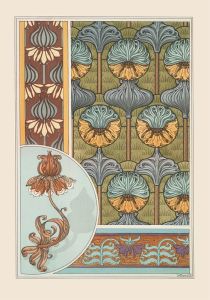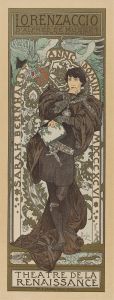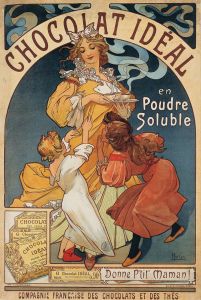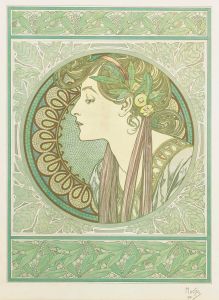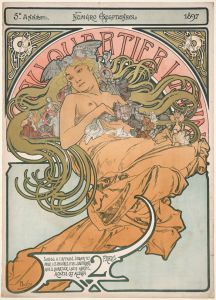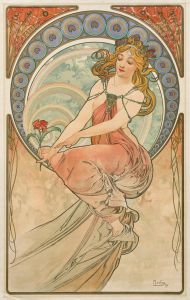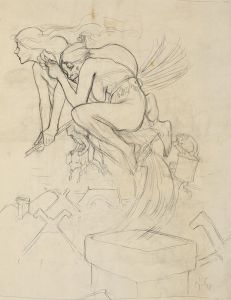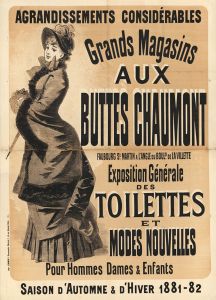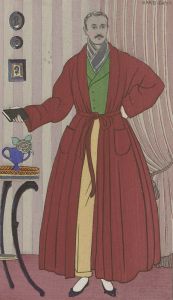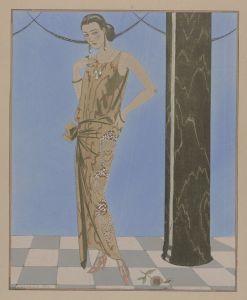
Carton de vitrail pour la bijouterie Fouquet
A hand-painted replica of Alphonse Mucha’s masterpiece Carton de vitrail pour la bijouterie Fouquet, meticulously crafted by professional artists to capture the true essence of the original. Each piece is created with museum-quality canvas and rare mineral pigments, carefully painted by experienced artists with delicate brushstrokes and rich, layered colors to perfectly recreate the texture of the original artwork. Unlike machine-printed reproductions, this hand-painted version brings the painting to life, infused with the artist’s emotions and skill in every stroke. Whether for personal collection or home decoration, it instantly elevates the artistic atmosphere of any space.
Alphonse Mucha, a renowned Czech artist, is celebrated for his distinctive style that became synonymous with the Art Nouveau movement. One of his notable works is the "Carton de vitrail pour la bijouterie Fouquet," which translates to "Stained Glass Design for the Fouquet Jewelry Shop." This piece is a testament to Mucha's intricate design skills and his ability to blend art with commercial spaces.
The "Carton de vitrail" was created as a design for a stained glass window intended for the jewelry shop of Georges Fouquet, a prominent Parisian jeweler. The collaboration between Mucha and Fouquet began around 1900, a period when Mucha's fame was at its peak due to his successful posters and decorative panels. Fouquet, seeking to revitalize his brand and attract a modern clientele, commissioned Mucha to design both the interior and exterior of his new shop located on Rue Royale in Paris.
Mucha's design for the stained glass was part of a larger project that included not only the window but also the entire shop's interior decoration. The shop was a complete work of art, embodying the Art Nouveau style with its flowing lines, natural forms, and elaborate ornamentation. Mucha's work for Fouquet's shop is often cited as one of the quintessential examples of Art Nouveau interior design.
The stained glass design itself reflects Mucha's characteristic style, featuring elegant, elongated figures, often women, surrounded by intricate floral and natural motifs. These elements are typical of Mucha's work, which often included idealized female figures set against lush, decorative backgrounds. The use of stained glass allowed Mucha to play with light and color, adding a dynamic element to the shop's atmosphere.
Mucha's collaboration with Fouquet was not just limited to the shop's design. He also created jewelry designs for Fouquet, which were exhibited at the 1900 Exposition Universelle in Paris. These designs further cemented Mucha's reputation as a versatile artist capable of working across different mediums and scales.
The Fouquet shop, with Mucha's designs, became a landmark of Art Nouveau architecture and design. However, the shop was dismantled in 1923, and its interior, including Mucha's stained glass designs, was preserved and is now part of the collection at the Carnavalet Museum in Paris. This preservation allows contemporary audiences to appreciate Mucha's work in its original context.
Alphonse Mucha's "Carton de vitrail pour la bijouterie Fouquet" is a significant piece that highlights the intersection of art and commerce during the Art Nouveau period. It exemplifies Mucha's ability to create harmonious and aesthetically pleasing environments that enhance the commercial appeal of a space while maintaining artistic integrity. His work for Fouquet remains a celebrated example of how art can transform everyday spaces into extraordinary experiences.





